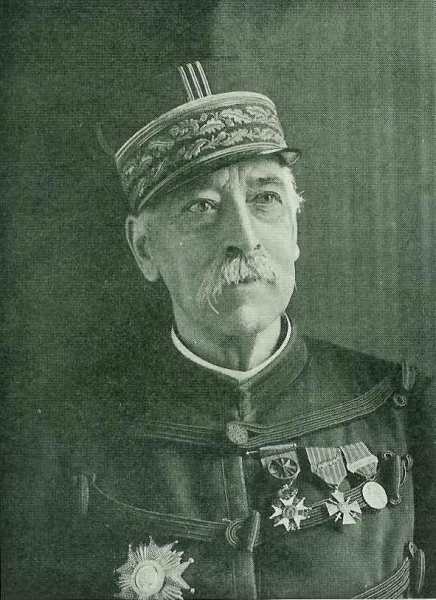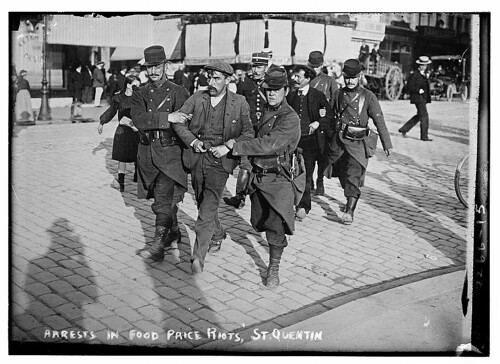
One day in October, 1860, Apache Indians raided the ranch of John Ward on Sonoita Creek, plundered his house, took his son Mickey Free, and ran off all of his stock. John Ward was absent at the time of the raid. Upon his return, Ward immediately rode to Fort Buchanan, twelve miles to the northeast, at the head of the Sonoita Valley, and reported the raid to the Commanding Officer, Lieut. Col. Pitcain Morrison.

Nothing was done at this time, the reasons to this day are unknown, but a guess would be due to the lack of troops present for duty. No reason was ever given and the pursuit of the raiders was not undertaken until January 29, 1861, three months later.
On January 29, 1861, Lieut. Col. Morrison ordered Second Lieutenant George N. Bascom, 7th U.S. Infantry, to proceed to Apache Pass, 150 miles to the Northeast to retake the boy, Mickey Free and the stolen stock. Bascom's command, consisted of 54 men mounted on mules. Also accompanying Bascom was Mr. Ward and an interpreter called Antonio. Bascom and his command arrived at the west summit of Apache Pass February 3rd and proceeded over the road two and a half miles to the Overland Mail Station.
Bascom halted his command for water, and told the station keeper Mr. Culver that he was on his way to Fort Bliss, Texas. After watering his command, Bascom continued on his way. When he had marched about one mile to one and a half miles, he halted his command in the vicinity of Goodwin Canyon and set up his camp. Bascom's command was camped in Siphon Canyon. Cochise's camp was in Goodwin Canyon, only a short distance away.
Bascom convinced Cochise to meet with him. Suspicious of Bascom's plans, Cochise brought with him his brother Coyuntwa, two nephews, his wife, and his two children. At the meeting, Cochise claimed he knew nothing of the affair. Doubting the Indian's honesty, Bascom attempted to imprison him and his family in a tent to be held hostage, but Cochise was able to escape with only a leg wound.
Bascom met Cochise at Apache Pass and captured him. Cochise escaped and Bascom captured five members of Cochise's family in retaliation, prompting Cochise to lay ambushes and capture four Americans whom he offered to trade for his family members.
On February 5, 1861, Cochise delivered a message to Bascom pleading for the release of his family, but Bascom refused and told Cochise that they "would be set free just so soon as the boy was released."
The following day, Cochise and a large party of Apaches attacked a group of Americans and captured three hostages, offering them in exchange for his family, but Bascom maintained that he would accept nothing other than the return of the boy and cattle. On February 7, 1861, Cochise and his men attacked Bascom's soldiers while they were fetching water.
According to recent sources, Cochise was known for his truthfulness and integrity and Bascom's accusations were false.
Cochise fled to Sonora. On the way, he killed the American prisoners and left their remains to be discovered by Bascom. Several days later, Bascom hanged Cochise's brother and nephews before he and his soldiers began their journey home.
The moment when Cochise discovered his brother and nephews dead has been called the moment when the Indians (the Chiricahua in particular) transferred their hatred of the Mexicans to the Americans.
Cochise's revenge in the form of numerous raids and murders were the beginning of the 25-year-long Apache Wars.
 As judged by their performance in battle, the Peresviet class needn't have spooked the British. In the Russo-Japanese War all three of the ships were sunk and put out of action by the Japanese. Peresviet was stationed at Port Arthur with the main fleet, along with Pobieda. They were involved in a sortie in strength in August 1904, resulting in Russian breakout and pitched battle with the Japanese battle fleet offshore as afternoon deepened into evening. Peresviet became the flagship at the Battle of the Yellow Sea after the commanding admiral was killed and his flagship Tsesarevich disabled; but Peresviet herself sustained 39 hits and had her signal halyards shot away so she was a most ineffective flagship, though she survived to sink another day, and later to serve the enemy. Sister ship Pobieda also survived the battle only to be bottled up in Port Arthur until the city fell to the Japanese in January 1905. There they were sunk by plunging fire from the heights starting in Nov. 1904.
As judged by their performance in battle, the Peresviet class needn't have spooked the British. In the Russo-Japanese War all three of the ships were sunk and put out of action by the Japanese. Peresviet was stationed at Port Arthur with the main fleet, along with Pobieda. They were involved in a sortie in strength in August 1904, resulting in Russian breakout and pitched battle with the Japanese battle fleet offshore as afternoon deepened into evening. Peresviet became the flagship at the Battle of the Yellow Sea after the commanding admiral was killed and his flagship Tsesarevich disabled; but Peresviet herself sustained 39 hits and had her signal halyards shot away so she was a most ineffective flagship, though she survived to sink another day, and later to serve the enemy. Sister ship Pobieda also survived the battle only to be bottled up in Port Arthur until the city fell to the Japanese in January 1905. There they were sunk by plunging fire from the heights starting in Nov. 1904.  All the warships sank or scuttled by the surrender, just into the New Year. Meanwhile the third sisterOsliabya had been detained in European waters by mechanical problems, until ordered off to the Far East with the flower of the Baltic fleet in Oct. 1904. After an 18,000-nm voyage the Russian "Second Pacific Fleet" (as the Tsar dubbed the ill-assorted agglomeration) met obliteration while trying to run the strait between Japan and Korea. Leading the port column into a tornado of Japanese HE and AP projectiles at the Battle of Tsushima, Osliabya became the first of seven Russian battleships to be sunk that day. Her 2 sisters were soon raised by the Japanese during the summer of 1905, extensively rebuilt, and added to the Mikado's naval lineup in 1907-08, though they were obsolete by that time and used primarily for coastal defense. The rebuild added lengthened funnels which made the ships' profiles more comely, and improved their speed. In all six Russian oceangoing battleships and two large coast-defense ironclads with 10" guns were added to the Mikado's fleet in this way or by capture. After enjoying their peculiarities for about a decade, the Japanese were glad to sell them back to the Russians when chance placed them on the same side in WWI.
All the warships sank or scuttled by the surrender, just into the New Year. Meanwhile the third sisterOsliabya had been detained in European waters by mechanical problems, until ordered off to the Far East with the flower of the Baltic fleet in Oct. 1904. After an 18,000-nm voyage the Russian "Second Pacific Fleet" (as the Tsar dubbed the ill-assorted agglomeration) met obliteration while trying to run the strait between Japan and Korea. Leading the port column into a tornado of Japanese HE and AP projectiles at the Battle of Tsushima, Osliabya became the first of seven Russian battleships to be sunk that day. Her 2 sisters were soon raised by the Japanese during the summer of 1905, extensively rebuilt, and added to the Mikado's naval lineup in 1907-08, though they were obsolete by that time and used primarily for coastal defense. The rebuild added lengthened funnels which made the ships' profiles more comely, and improved their speed. In all six Russian oceangoing battleships and two large coast-defense ironclads with 10" guns were added to the Mikado's fleet in this way or by capture. After enjoying their peculiarities for about a decade, the Japanese were glad to sell them back to the Russians when chance placed them on the same side in WWI.

















.jpg)

























